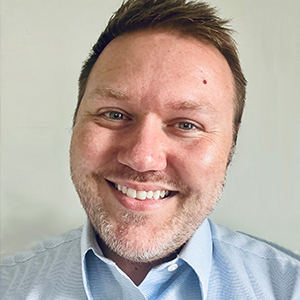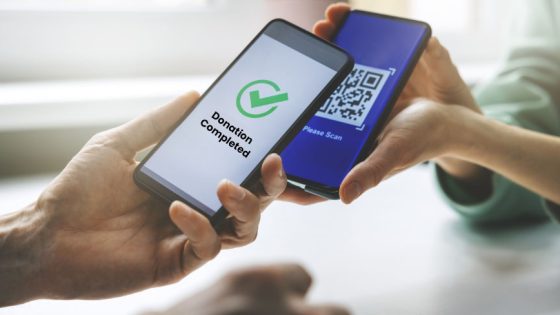Fundraising may appear straightforward from the outside—just a nonprofit leader meeting with potential donors and receiving large contributions at events. In reality, it’s a far more systematic and strategic process, built on relationship-building and thoughtful planning. Behind every successful fundraiser and generous donation lies the donor development cycle—a crucial framework that ensures nonprofits can nurture long-lasting partnerships with supporters.
Another way to think about the donor development cycle is to consider how your typical business approaches selling its products. First, you must identify your customers, and then educate or inform them about your product. Ultimately, you need to sell your product, and after the consumer has enjoyed what they bought from the business, they return to purchase more. It’s quite similar in the nonprofit fundraising world, too.
Fundraising is a noble profession, but it also is about convincing people of the value that your mission brings to your community and that effort is thoughtful, systematic, and ultimately uplifting to the donors.
Ready to turn your donor development efforts into a powerful, long-term fundraising strategy? Learn how we can help you implement an effective donor development cycle that nurtures relationships and maximizes your nonprofit’s fundraising potential. Contact us and let’s get started.
The donor development cycle is a strategic process used by nonprofit organizations to build and maintain relationships with donors, encouraging them to contribute to the organization’s mission and continue to do so over time. This cycle is designed to engage donors at various stages, from initial contact to long-term commitment and stewardship. Here’s a breakdown of the four main stages involved in the donor development cycle:
Stage 1: Identification
Identifying and Targeting Potential Donors in Nonprofit Fundraising
This step is all about spending time to identify prospective new donors and review the potential to upgrade current donors with a special solicitation or new opportunity.
- Objective: Identify potential donors who have the capacity and propensity to give, and determine which prospects are most likely to become donors.
- Activities: Research to find individuals, corporations, or foundations that align with your mission. Use databases, social media, networking events, and other resources to gather information about potential donors. Ask your Board members and volunteers for names of individuals in their network who may have a propensity to get involved.
Stage 2: Cultivation
Building Strong Donor Relationships Through Effective Cultivation
Cultivation is about building or growing a relationship with your donor or prospect. During this stage, you usually get to know your donor (prospect) better and start sharing more about the work your organization does. This is when the prospect potentially hears about your organization or a new project for the first time.
- Objective: Build relationships with qualified prospects to foster interest and engagement.
- Activities: Engage with prospects through personalized communication, such as meetings, phone calls, and events. Share stories, impact reports, and updates about your organization’s work to deepen their connection to your mission. With major gift prospects, it is important to have sincere and direct conversations where possible. Individuals with significant capacity would have great prospects to take on special tours of your nonprofit or meet out for lunch, coffee, or a home visit to get a better understanding of their passions and interests.
Stage 3: Solicitation
How to Make a Successful Donor Solicitation
Solicitation is sometimes viewed as the toughest element in this cycle. After weeks, months, and sometimes years of cultivation, you must ask the prospect to give.
- Objective: Make a direct request for a donation.
- Activities: Develop a tailored solicitation strategy for each prospect. This can include personalized letters, proposals, face-to-face meetings, or fundraising events. Clearly articulate the need, how the donation will be used, and the impact it will have.
Stage 4: Stewardship
Strengthening Donor Loyalty After the Donation
This is part of the process that occurs once a donor has given to your organization. This stage refers to the relationship-building and communications that take place after a gift has been received.
- Objective: Thank donors promptly and sincerely for their contributions and maintain and strengthen the relationship with donors after they have given.
- Activities: Send personalized thank you notes, call donors, and publicly recognize their support (with their consent). Demonstrating gratitude is crucial for maintaining a positive relationship. Keep donors informed about how their contributions are making a difference. Provide regular updates, invite them to events, and offer opportunities for further engagement. This step is vital for encouraging repeat donations and long-term support.
Maximizing Donor Development with Data, Personalization, and Communication
As you implement the four stages of the donor development cycle, other elements can support your efforts at each stage:
- Data Management: Utilize donor databases or customer relationship management (CRM) software to track donor interactions, preferences, and giving history. This helps in personalizing communication and ensuring no opportunities are missed.
- Personalization: Tailor your approach at each stage based on the individual donor’s interests, giving history, and engagement level. Personalization shows donors that you value their specific contribution and interest in your mission.
- Communication: Regular, transparent, and honest communication is critical throughout the cycle. Keeping donors informed and engaged helps build trust and long-term loyalty.
- Segmentation: Segment donors based on various criteria such as giving capacity, interest areas, and engagement level. This allows for more effective and targeted cultivation, solicitation, and stewardship strategies.
- Impact Reporting: Continuously share the impact of donations with your donors. Showing tangible results of their contributions reinforces their decision to support your organization and encourages continued giving.
Why the Donor Development Cycle is Key to Fundraising Success
Acquiring new donors takes a lot of effort. You send out great communications, invest in dedicated marketing, and create compelling fundraising materials…only for someone to give once. To see a great return on your investment, you should focus on the donor development cycle to turn those one-time donors into long-term supporters. The donor development cycle is a perfect way to imagine how you bring prospective donors into your work. At some point, you must solicit them and then ultimately build a relationship of gratitude to keep them engaged, informed, and willing to contribute again. Fundraising is a continuous circle of thoughtfulness combined with direct and clear communication. Implementing a donor development cycle will help your nonprofit organize your efforts in a coherent and systematic way allowing you to grow your philanthropy by nurturing current and prospective donor relationships effectively.
At Soukup Strategic Solutions, we understand the challenges of building and maintaining donor relationships. As your dedicated outsourcing partner, we offer the expertise and support you need to implement an effective donor development cycle. Whether you’re looking for strategic guidance or hands-on assistance, we’re here to help you strengthen your donor base and grow your nonprofit. Contact us today for a free consultation to discover how we can contribute to your fundraising success.






